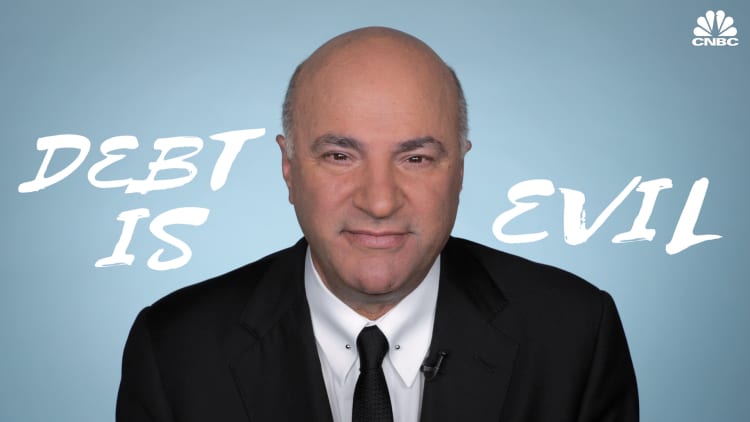Between student loans, credit cards and other expenses, many young people are in deep in the red.
Millennials who carry debt owe an average of $36,000 each and spend around 34 percent of their monthly income paying it off, new data from Northwestern Mutual's 2018 Planning & Progress Study finds.
That's similar to the amount of debt older generations have, according to the survey. Baby boomers with debt hold an average of $39,000 and comparable Gen-Xers have an average of $36,000.
However, unlike their older counterparts, reducing debt isn't necessarily millennials' No. 1 priority. When asked about their top goals, the most popular response, given by 54 percent of those surveyed, was saving enough to afford a major milestone, such as getting married or buying a house. Less than half of those surveyed, 49 percent, mentioned debt repayment among their answers.
Click to enlarge
By contrast, 55 percent of Gen-Xers and 53 percent of boomers listed reducing debt as a top priority. It was by far the most popular response from both generations.
Other popular financial priorities for millennials include establishing a budget (42 percent), reviewing retirement plan contributions (13 percent) and reviewing tax strategies (13 percent).
Click to enlarge
Though they must contend with the rising costs of major expenses like college and rent, millennials are focused on reaching their goals and aren't letting debt stand in the way, Northwestern Mutual concludes.
"Millennials have passed the most important first step towards securing their financial futures – understanding they need a plan to meet their goals," Emily Holbrook, director of planning at Northwestern Mutual, says in the survey. "From there it becomes a matter of making sure they have confidence in the paths they're on so that they can live their lives on their own terms."
If you're in the process of eliminating debt, experts typically recommend two popular strategies: the avalanche method and the snowball method.

Mathematically, the most efficient way to eliminate debt is to follow the avalanche method, in which you list your debts from highest to lowest by interest rate. Pay the minimum balance on each, then dedicate as much extra as you can each month to the one with the highest interest rate.
However, researchers for the Harvard Business Review found that the snowball method is actually more effective because it's easier for people to stick with. To try this strategy, list all your debts out by amount, from smallest to largest. Pay the minimum balance on each one except the smallest. For that one, dedicate as much cash as possible each month until it is repaid. Then move on to the second-smallest debt.
The idea is that you'll gain momentum by watching debts disappear and that will motivate you to continue.
However, at the end of the day, the best strategy for paying off debt comes down to whichever option works best for you.
Like this story? Subscribe to CNBC Make It on YouTube!
Don't miss: Apple products, rent, college and 12 other things Americans say cost too much



